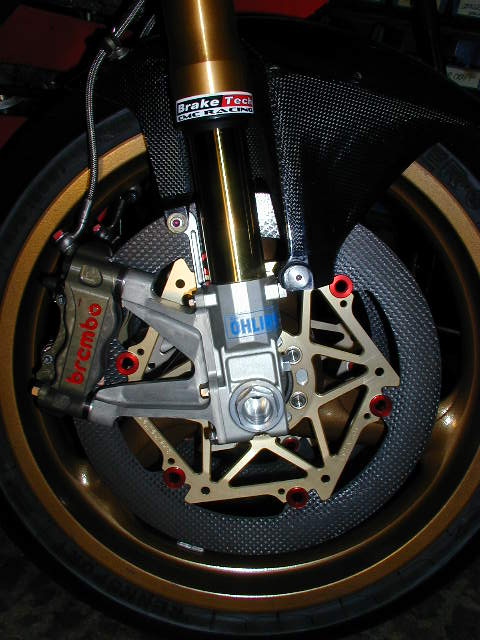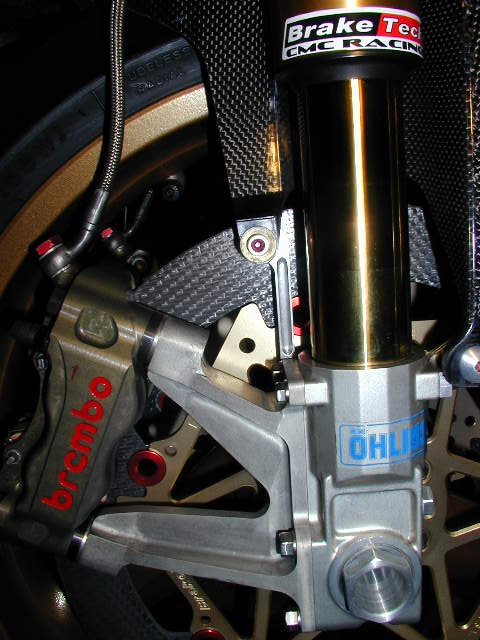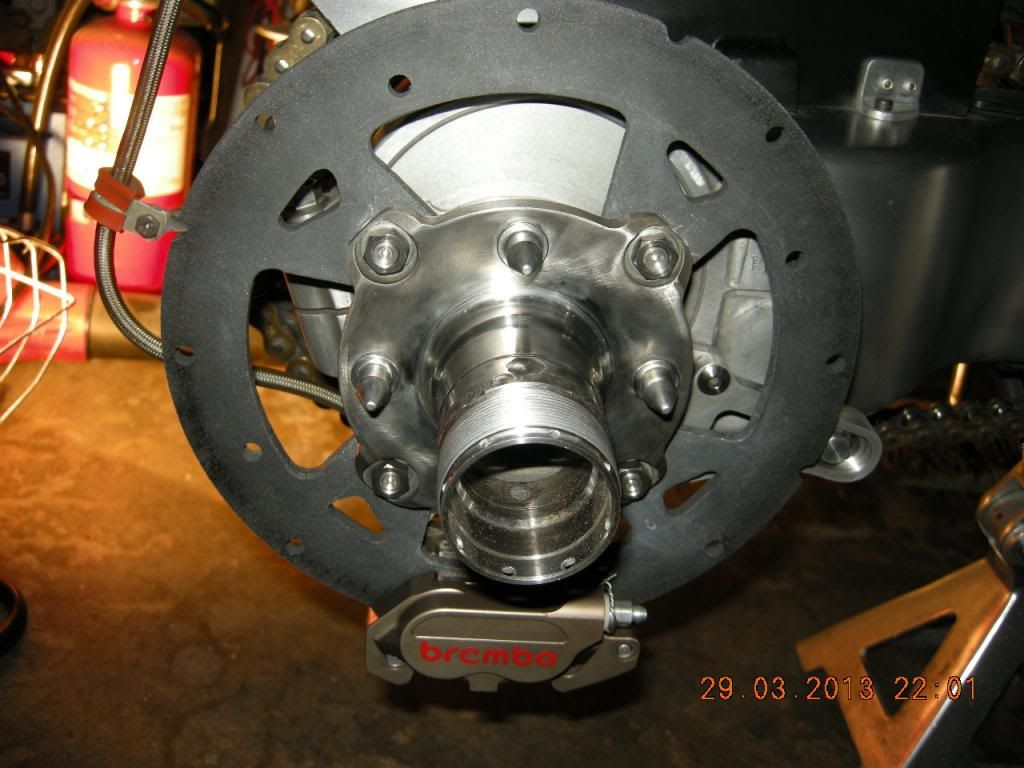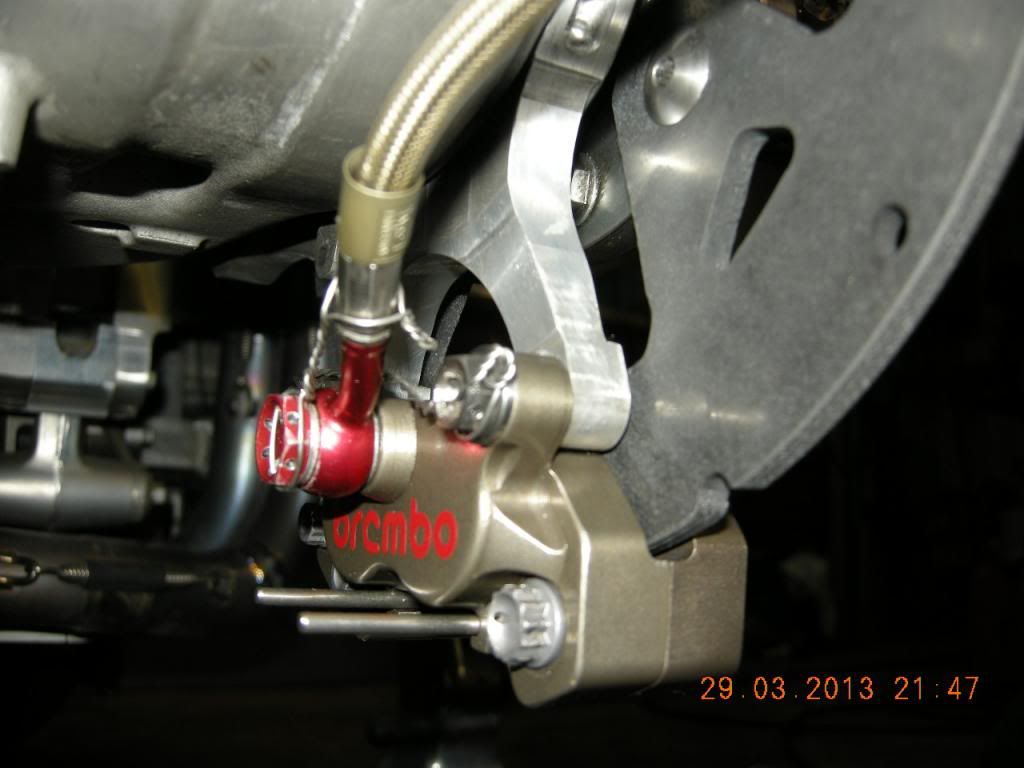I run Bosch ESI brake fluid, works great in several car brands and ages, ABS are happy too.. It gets replaced every 3 years.
- Home
- Forums
- Motorcycles, Boating, Small Engine, Aviation, Powe
- Motorcycles and Motorcycle Lubrication
You are using an out of date browser. It may not display this or other websites correctly.
You should upgrade or use an alternative browser.
You should upgrade or use an alternative browser.
Change your brake fluid
- Thread starter grampi
- Start date
What's so funny?
Dot 5 is also a compressible fluid and Dot 3/4/5.1 is not, Meaning the silicone fluid, migh have a spongy feel, specially if any moisture contamination.
I do it at the begnning of track season and at the end. I’ve got speedbleeders, and a dual hose-reservoir collector so takes me about 5 minutes to do, those bleeders are some of the best money I’ve ever spent. I do the rear once a year but hardly use it when I’m riding on track or in the twisties.
After seeing the condition of the fluid sitting in my 06 Honda Odyssey brake calipers recently, i also recommend a complete fluid change at recommended intervals (2 years IAW Honda maintenance). Not just thru the bleeder, but push the pistons back, remove the line and empty the caliper out before bleeding in new fluid. Basically, there was a stratified layer of relatively clean fluid near the top of the caliper, while there was a dark and gross layer of fluid further down. Mind you, this was after completely bleeding the brakes and waiting several months. While some say that the old fluid sitting around the pistons and below the bleeder valve will intermix with the new fluid sitting in the lines and around the bleeder, i saw no evidence of this occurring, and if it does, it must be a very slow mixing process. The grungy fluid was gumming up the pistons.
While breaking in my Ceramic Composite rotors I got the pads so hot that is to
literally boiled the brake fluid... the lever went to the grip in a Nano second and
I limped home on the rear caliper alone among the perverted NorCal traffic...
So if your headed to the track I recommend flushing the system with fresh fluid...
Quote Jeff @ Brake Tech CMC break in
The new AXIS/StarBlade Ceramic Composite Rotors require a special
bed-in procedure, which when properly administered, takes place very
rapidly. Using the requisite Ferodo brake pads, apply the brakes with
progressively greater pressure over a series of 10-20 applications.
You will quite literally feel the brakes coming in at the lever, as
they do, increase the applied braking force to m~ac maximum in a safe
area. It is ,crucially important to create an even transfer film layer
from the friction material to the swept area of the rotor. When this
has been accomplished, and it shouldn't take long, you're good to go!


My rear disc is Ceramic Matrix Composite like my front disc...
You have to feel it to believe it but my finished Ceramic Matrix Composite disc only weights 7oz...


literally boiled the brake fluid... the lever went to the grip in a Nano second and
I limped home on the rear caliper alone among the perverted NorCal traffic...
So if your headed to the track I recommend flushing the system with fresh fluid...
Quote Jeff @ Brake Tech CMC break in
The new AXIS/StarBlade Ceramic Composite Rotors require a special
bed-in procedure, which when properly administered, takes place very
rapidly. Using the requisite Ferodo brake pads, apply the brakes with
progressively greater pressure over a series of 10-20 applications.
You will quite literally feel the brakes coming in at the lever, as
they do, increase the applied braking force to m~ac maximum in a safe
area. It is ,crucially important to create an even transfer film layer
from the friction material to the swept area of the rotor. When this
has been accomplished, and it shouldn't take long, you're good to go!


My rear disc is Ceramic Matrix Composite like my front disc...
You have to feel it to believe it but my finished Ceramic Matrix Composite disc only weights 7oz...


Last edited:
I've been using Motul RBF 600, then RBF 660 for many years. Now trying the Motul RBF 700. Higher dry boiling point than Motul 5.1.
Me too but don't assume the RBF 600 660 700 labeling = 600ºF 660ºF 700ºF respectfully... Motul fluids are only certified Dot 4 = 446 °F...
Marketing is allowed to add the typical higher numbers without certification...
RBF 600 = 594 °F
RBF 660 = 617°F
RBF 700 = 637°F
Me too but don't assume the RBF 600 660 700 labeling = 600ºF 660ºF 700ºF respectfully... Motul fluids are only certified Dot 4 = 446 °F...
Marketing is allowed to add the typical higher numbers without certification...
RBF 600 = 594 °F
RBF 660 = 617°F
RBF 700 = 637°F
Regardless of of any 'certification', I can confirm that the Motul brake fluids in question do perform as advertised. I'd give specifics, but that could violate the NDA I agreed to.
Use what you will.
Regardless of of any 'certification', I can confirm that the Motul brake fluids in question do perform as advertised.
DOT 4 is the certified standard... performed as advertised in accordance to 02SE is not now and never will supersede Motul's standard...
Larry, Larry, Larry... As I said IME they do perform as advertised.
Motul claims they exceed the standard. I'm just telling you I've found that to be the case. Use whatever you like.
Motul claims they exceed the standard. I'm just telling you I've found that to be the case. Use whatever you like.
This is like pornography for motorcyclists. Nice setup!While breaking in my Ceramic Composite rotors I got the pads so hot that is to
literally boiled the brake fluid... the lever went to the grip in a Nano second and
I limped home on the rear caliper alone among the perverted NorCal traffic...
So if your headed to the track I recommend flushing the system with fresh fluid...
Quote Jeff @ Brake Tech CMC break in
The new AXIS/StarBlade Ceramic Composite Rotors require a special
bed-in procedure, which when properly administered, takes place very
rapidly. Using the requisite Ferodo brake pads, apply the brakes with
progressively greater pressure over a series of 10-20 applications.
You will quite literally feel the brakes coming in at the lever, as
they do, increase the applied braking force to m~ac maximum in a safe
area. It is ,crucially important to create an even transfer film layer
from the friction material to the swept area of the rotor. When this
has been accomplished, and it shouldn't take long, you're good to go!


My rear disc is Ceramic Matrix Composite like my front disc...
You have to feel it to believe it but my finished Ceramic Matrix Composite disc only weights 7oz...


Recently replaced the OE fluid in my 2016 Yamaha FJ-09. Yep, 7-year-old OE fluid.
Huge difference in brake feel and completely changed how I felt about the bike in general. Previously it was like squeezing a wet 2x4 and hoping it stops, no progressive feel or much feedback from either lever. Now the brake feel inspires confidence and makes riding the thing much more of a pleasure.
Huge difference in brake feel and completely changed how I felt about the bike in general. Previously it was like squeezing a wet 2x4 and hoping it stops, no progressive feel or much feedback from either lever. Now the brake feel inspires confidence and makes riding the thing much more of a pleasure.
A tip .. Get a set of Speed Bleeders for your calipers and install them beforehand. If you get air in the lines, they'll make life a lot easier. All calipers on my machines have them installed, along with the clutch slave cylinder on the Vmax.
Another point, besides the safety aspect of changing your brake fluid every two years as required by almost every manufacturer on the planet is you will greatly reduce the chance of caliper and master cylinder issues caused by corrosion.
It's why just using the required brake fluid is fine, no need for high end stuff as it needs to be changed anyway because the fluid becomes saturated with moisture.
TIP:
This is a fantastic device to change your bike fluid. No need for you or anyone to pump the brakes, just remove the master cylinder cover, stick this thing on the caliper bleed screw, open the screw and suck out the old fluid (being careful to always have fluid in the master, dont such in air!) It's actually a joy to use.

 www.harborfreight.com
www.harborfreight.com
It's why just using the required brake fluid is fine, no need for high end stuff as it needs to be changed anyway because the fluid becomes saturated with moisture.
TIP:
This is a fantastic device to change your bike fluid. No need for you or anyone to pump the brakes, just remove the master cylinder cover, stick this thing on the caliper bleed screw, open the screw and suck out the old fluid (being careful to always have fluid in the master, dont such in air!) It's actually a joy to use.

Brake Bleeder and Vacuum Pump Kit
Amazing deals on this Brake Bleeder And Vacuum Pump Kit at Harbor Freight. Quality tools & low prices.
I recently flushed the brake fluid on my 77 kz650. The brakes were fully re-built about two years ago and the bike is not ridden all that much, less than 1k miles a year and is garage kept.
Still, the brake fluid at the caliper was dark and quite thick when compared to the fresh fluid.
It looked normal in the reservoir though.
I’m sure the fluid was still fine, but like alarmguy mentioned, fluid change is an easy way to minimize any moisture buildup and subsequent corrosion issues.
Still, the brake fluid at the caliper was dark and quite thick when compared to the fresh fluid.
It looked normal in the reservoir though.
I’m sure the fluid was still fine, but like alarmguy mentioned, fluid change is an easy way to minimize any moisture buildup and subsequent corrosion issues.
Similar threads
- Replies
- 2
- Views
- 999
- Replies
- 49
- Views
- 2K
- Replies
- 39
- Views
- 2K
- Replies
- 26
- Views
- 2K
